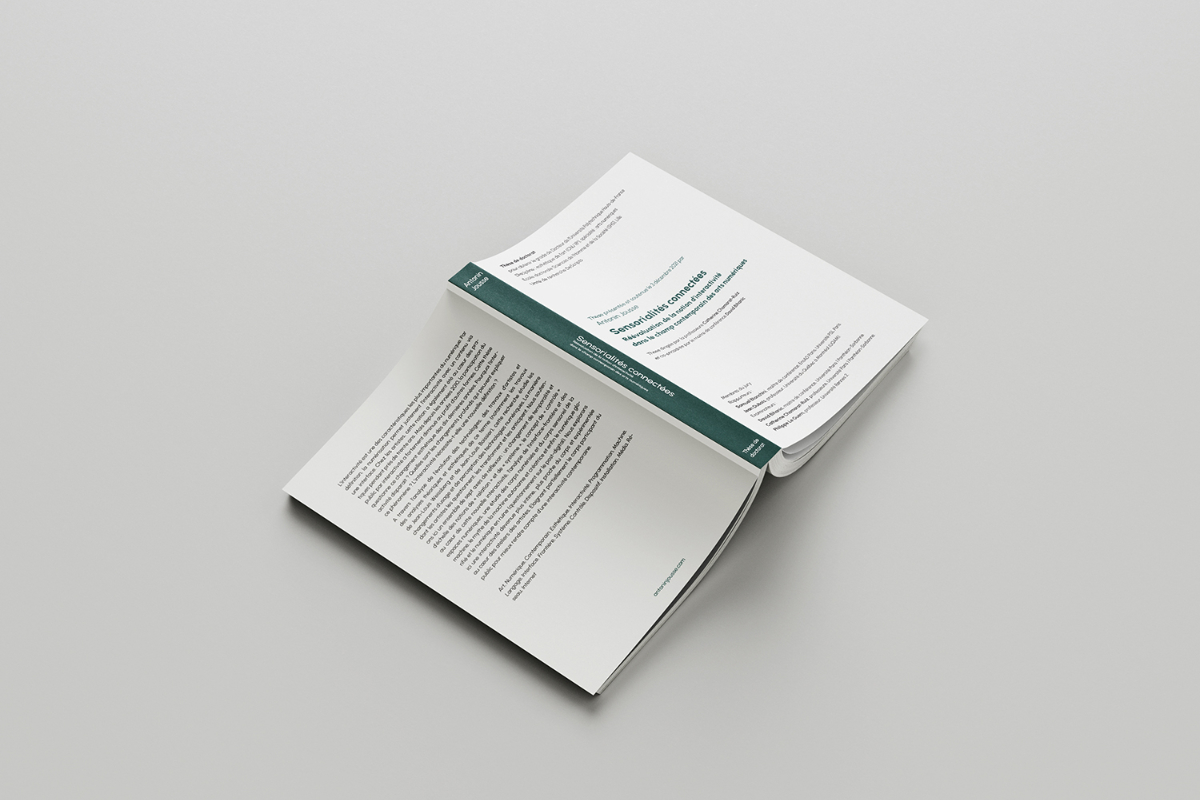
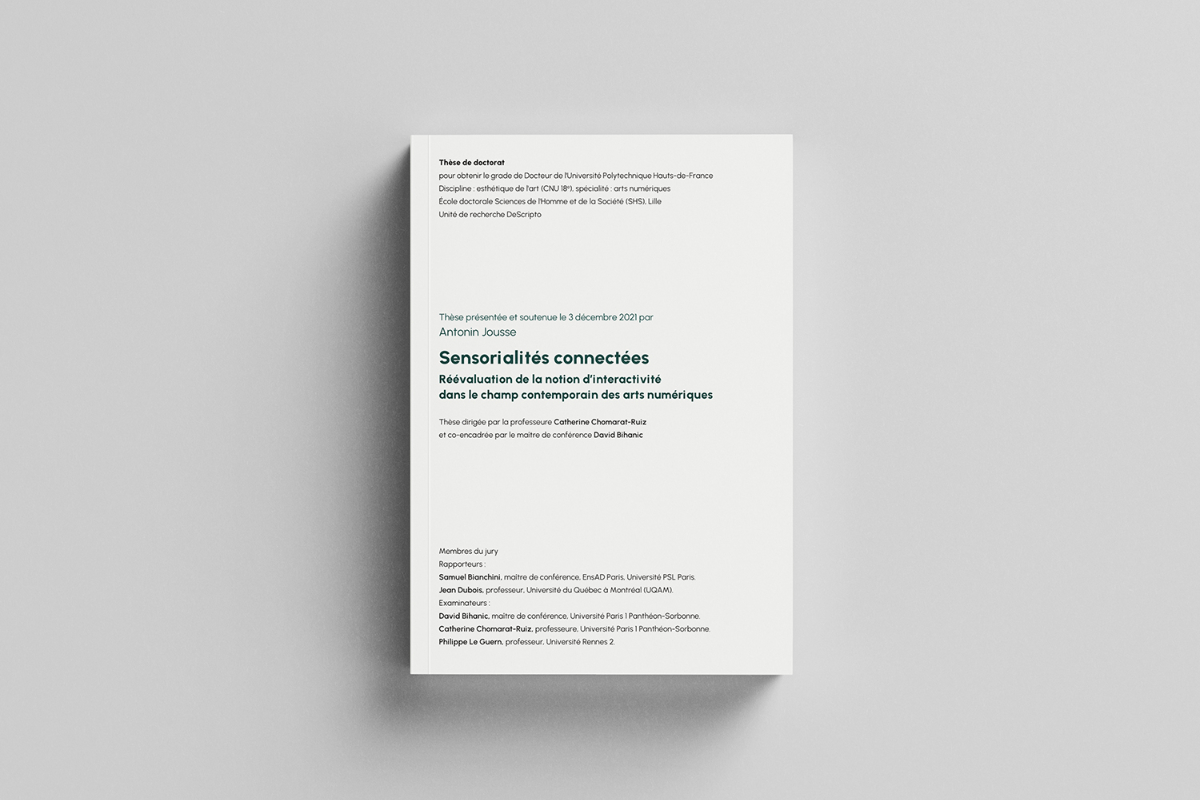
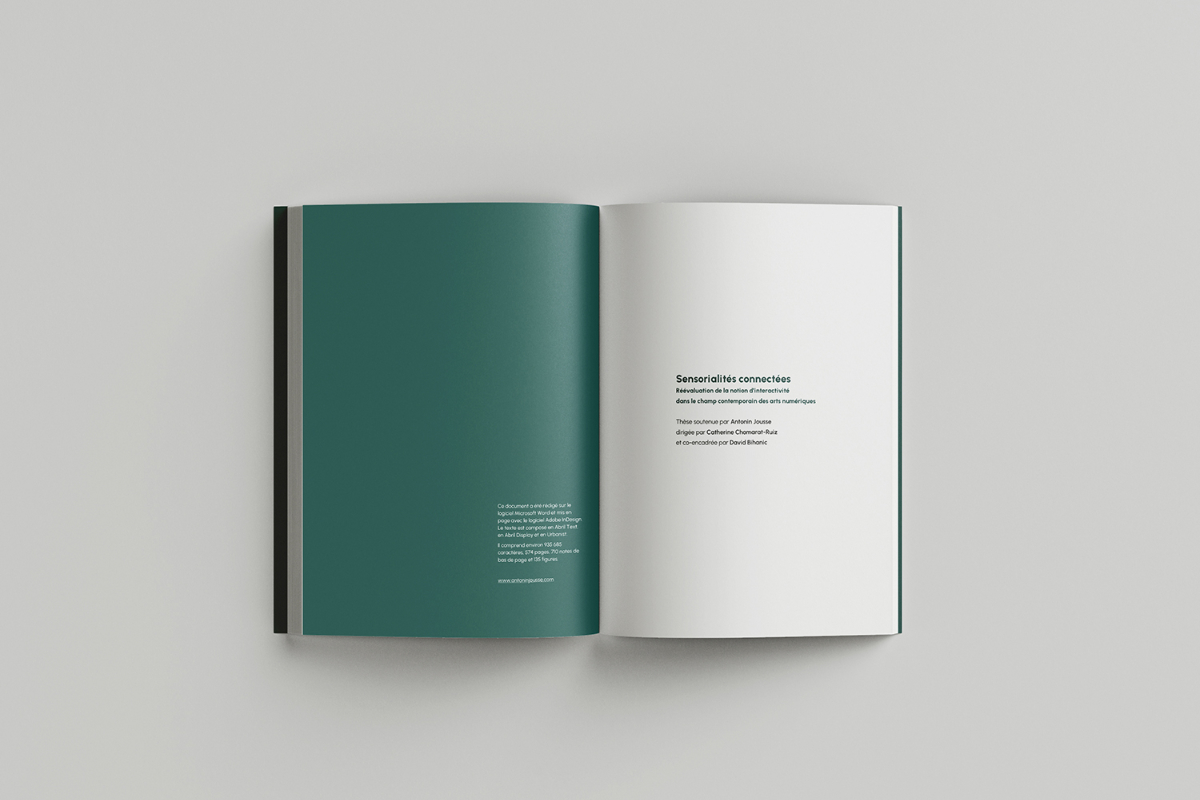
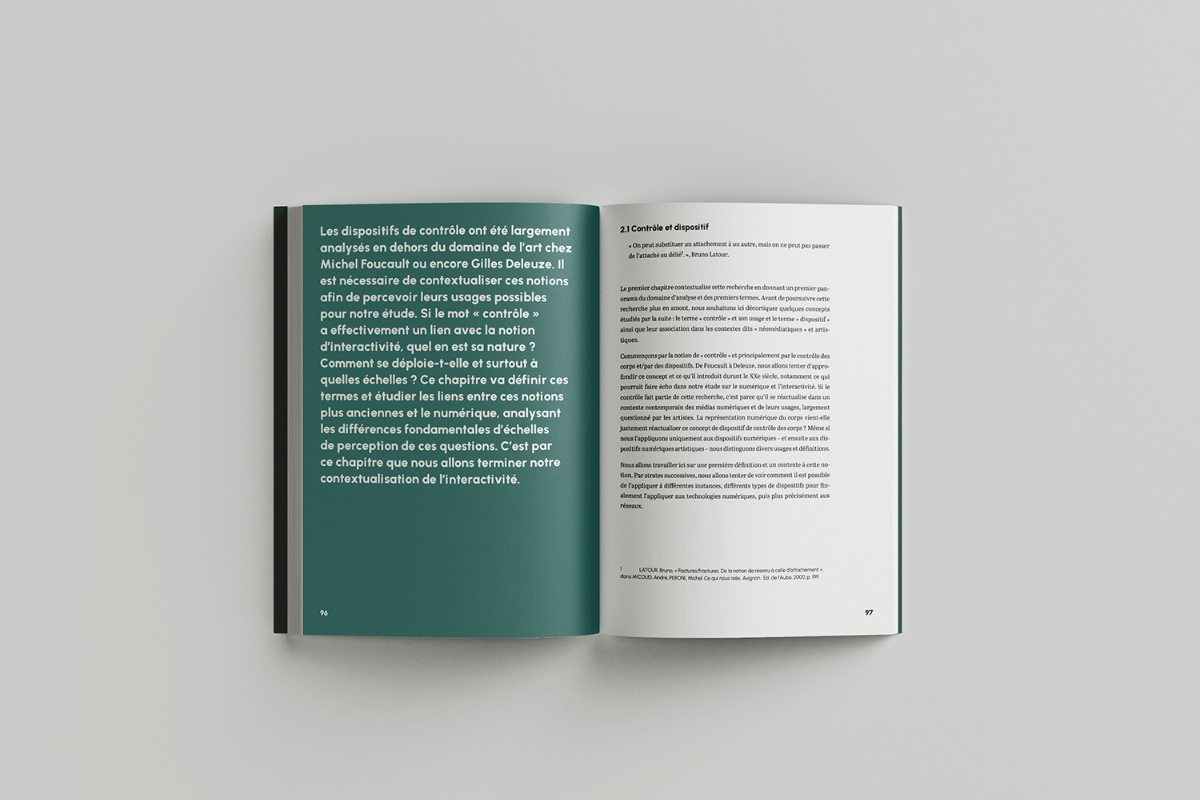
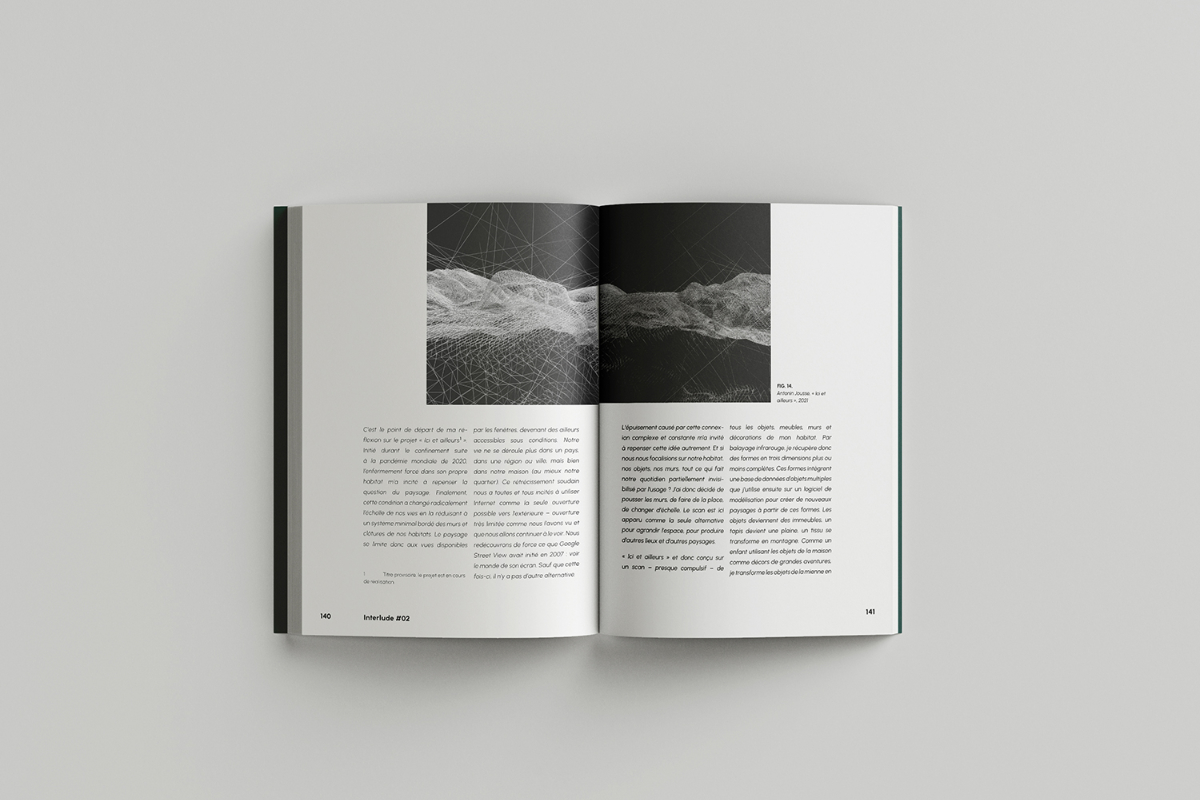
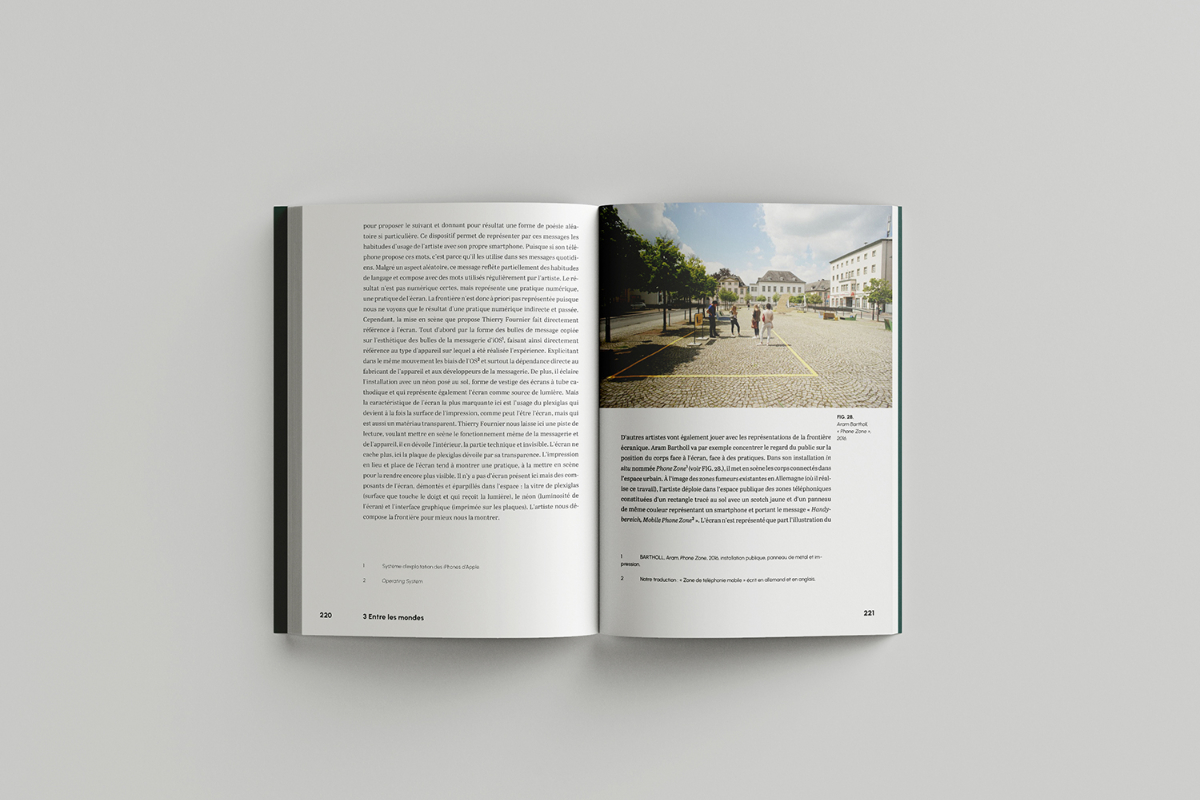
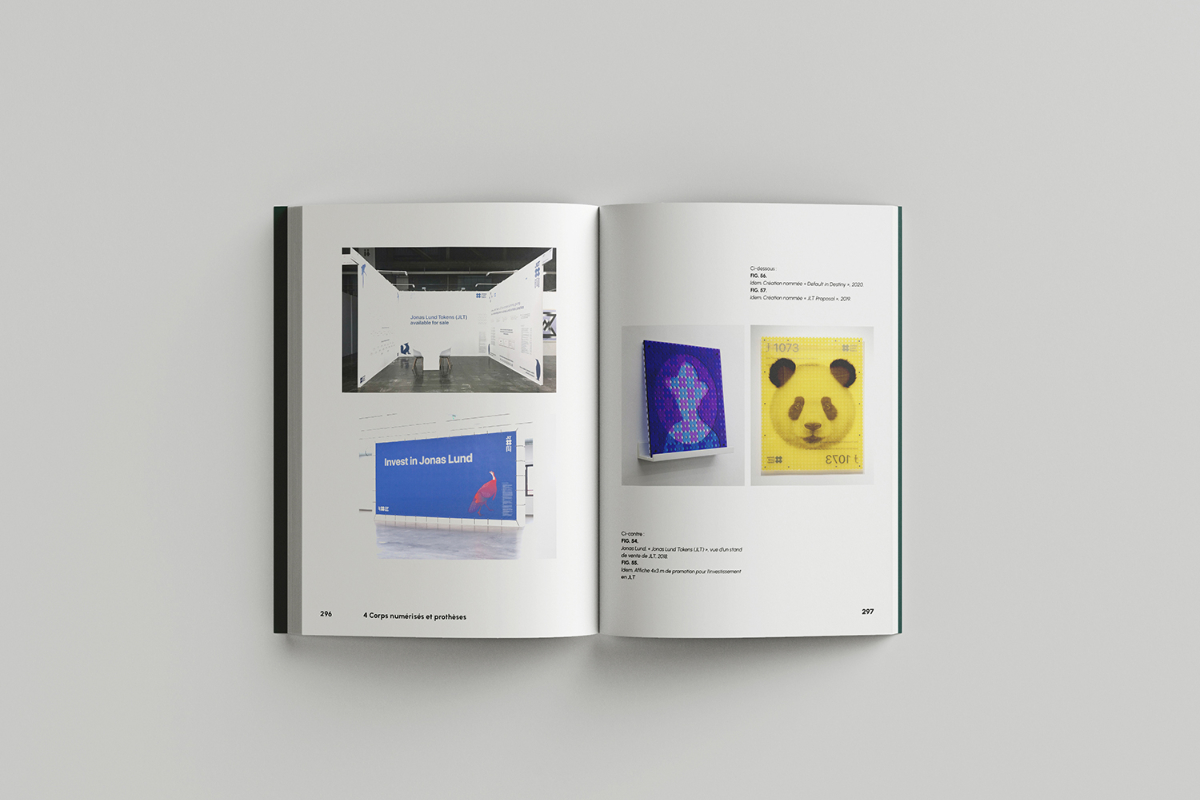
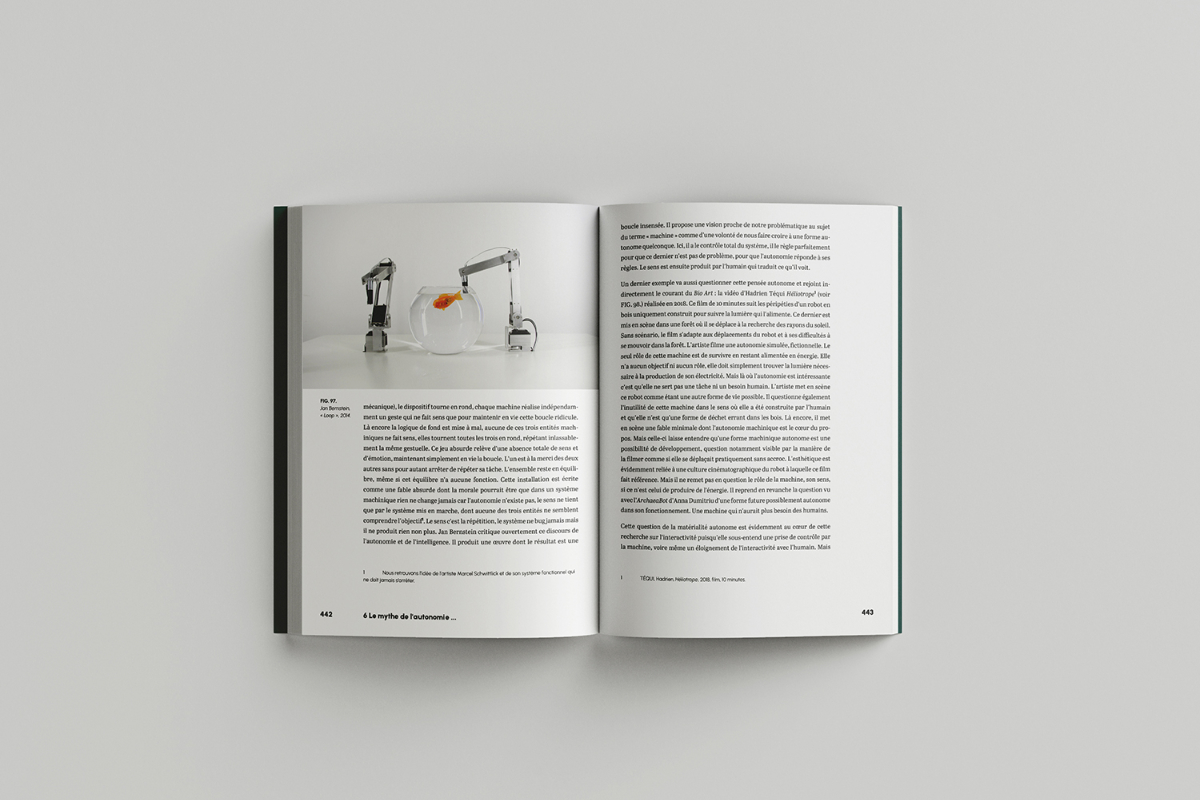
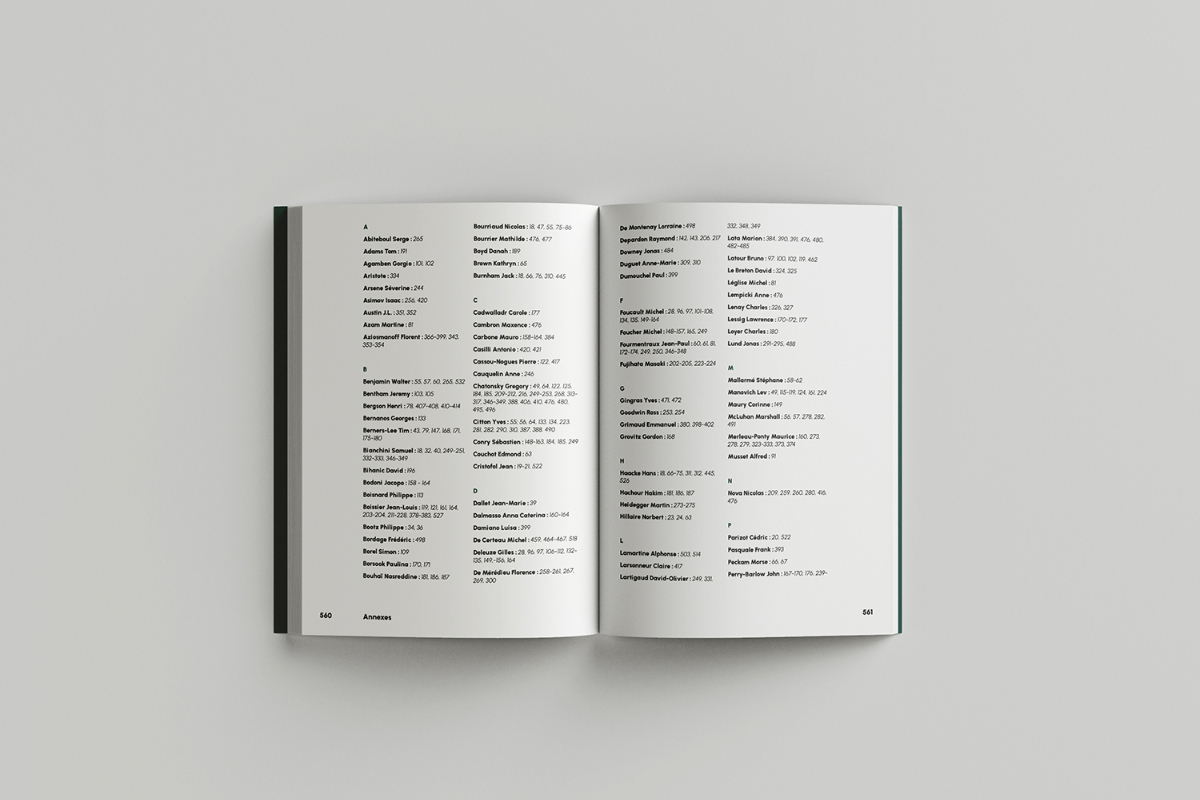
SENSORIALITÉS CONNECTÉES : RÉÉVALUATION DE LA NOTION D'INTERACTIVITÉ DANS LE CHAMP CONTEMPORAIN DES ARTS NUMÉRIQUES /
CONNECTED SENSORIALITIES: RE-EVALUATING THE NOTION OF INTERACTIVITY IN THE CONTEMPORARY FIELD OF DIGITAL ARTS
Ph.D. thesis, 574 p., 210 x 297mm, 2021
Thesis in aesthetics (CNU 18e) directed by Catherine Chomarat-Ruiz (professor, Paris 1 Panthéon-Sorbonne) and co-supervised by David Bihanic (lecturer, Paris 1 Panthéon-Sorbonne). Université Polytechnique Hauts-de-France, Larsh Laboratory.
My thesis was qualified by the CNU in 2022 in Arts (18th).
[FR]
L’interactivité est une des caractéristiques les plus importantes du numérique. Par définition, la numérisation permet justement l’interactivité avec un contenu via une interface. Chez les artistes, cette notion a également été au cœur des pratiques pendant près de trente ans. Mais depuis les années 2010, la participation du public par interactivité a fortement diminué au profit d’autres formes. Cette thèse questionne ce changement esthétique des dix dernières années. Pourquoi l’interactivité disparaît ? Quelles sont les changements profonds qui peuvent expliquer ce phénomène ? L’interactivité nécessite-t-elle une nouvelle définition ?
À travers l’analyse de l’évolution des technologies, des travaux d’artistes et des analyses théoriques et esthétiques de ce terme (notamment les travaux de Jean-Louis Weissberg et de Jean-Louis Boissier), cette recherche étudie les changements d’usage et de perception des technologies numériques. La manière dont les artistes les questionnent, les transforment et les anticipent. Nous soutenons ici un ensemble de sept axes de réflexion : un changement de temporalité et d’échelle des notions de « relation » et de « système », le concept de « contrôle » au cœur de cette nouvelle interactivité, l’analyse de l’interface-frontière et des espaces numériques, une étude des corps numérisés et du corps sensoriel de la machine, le mythe de la machine autonome et créatrice et enfin le numérique glorifié et le numérique en ruine (questionnement sur le post-digital). Nous explorons ici une interactivité devenue plus intime, plus proche du corps et expérimentée au cœur des ateliers des artistes. Éloignant partiellement le corps participant du public
pour mieux rendre compte d’une interactivité contemporaine.
[EN]
Interactivity is one of the most important characteristics of digital technologies. Digitization allows interactivity with content via an interface. This notion has also been central to artists' practices for almost thirty years. However, over the past decade audience participation through interactive interface has decreased significantly in favor of the other forms. This thesis explores the aesthetic shift over the last ten years. Why is interactivity disappearing? What are the main changes that can explain this phenomenon? Does interactivity require a new definition?
Through the analysis of the evolution of technologies, artists' works and theoretical and aesthetic analyses of this term (the works of Jean-Louis Weissberg and Jean-Louis Boissier in particular), this research studies the changes in the use and perception of digital technologies. The way in which the artists question them, transform them, and anticipate them. Here we support the following lines of thought: a change of temporality and scale of the notions of "relation" and "system", the concept of "control" at the heart of this new interactivity, the analysis of the interface-border and digital spaces, a study of digitized bodies and the sensorial body of the machine, the myth of the autonomous and creative machine, and finally the glorified digital and the digital in decay (questioning the post-digital). Here we explore an interactivity that has become more intimate, closer to the body and experienced at the heart of the artists' studios. Partially distancing the participating body from the public to better reflect a contemporary interactivity.
Keywords
Art, Digital, Contemporary, Aesthetics, Interactivity, Programmation, Machine, Language, Interface, Frontier, System, Control, Device, Installation, Media, Network, Internet
Jury Members
Pr. Jean Dubois, Université du Québec à Montréal (jury chair and reviewer)
Pr. Laurent Guido, University of Lille (member)
Pr. Catherine Chomarat-Ruiz, University Paris 1 Panthéon-Sorbonne (thesis advisor)
Dr. David Bihanic, University Paris 1 Panthéon-Sorbonne (thesis advisor)
&
Dr. Samuel Bianchini, EnsAD Paris, PSL University Paris (reviewer only)
The thesis was defended at the University Paris 1 Panthéon-Sorbonne on December 3, 2021.
Manuscript available on HAL Platform
← BACK TO INDEX